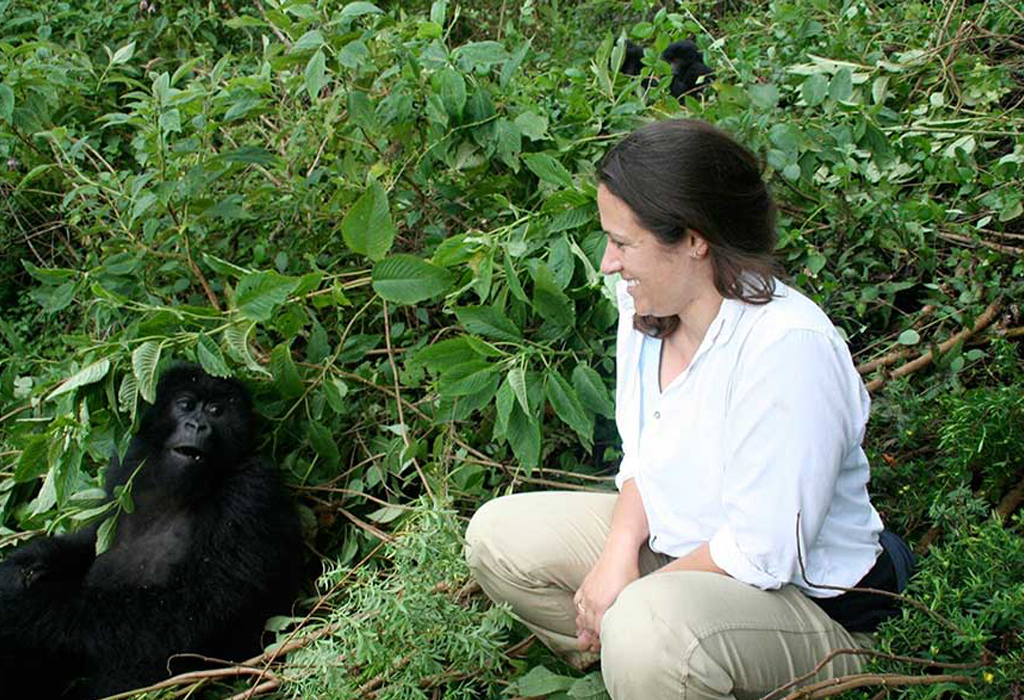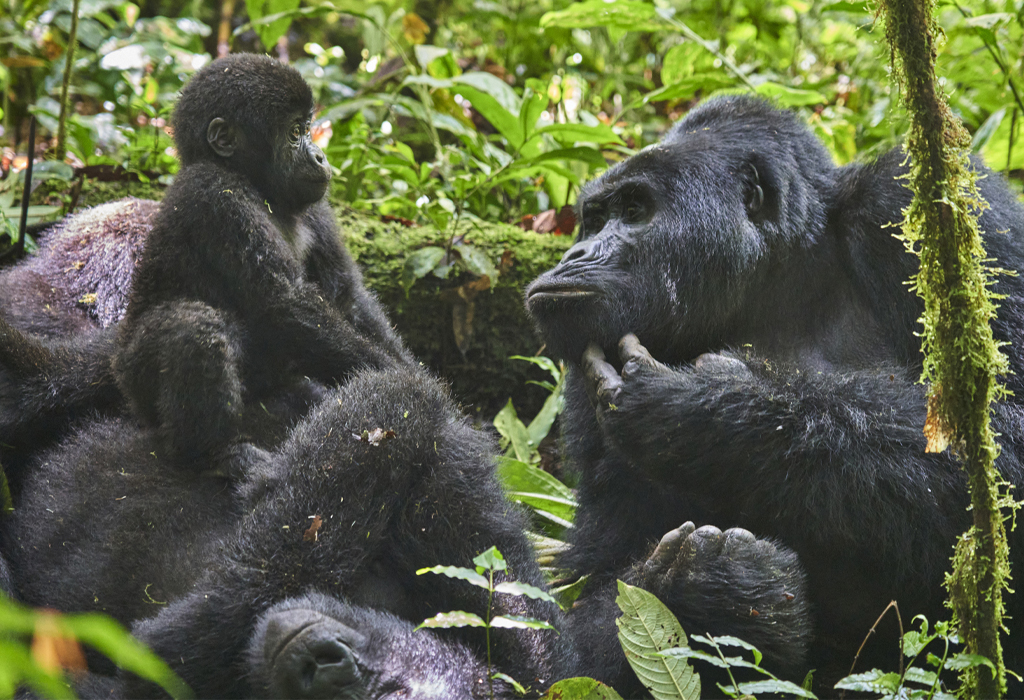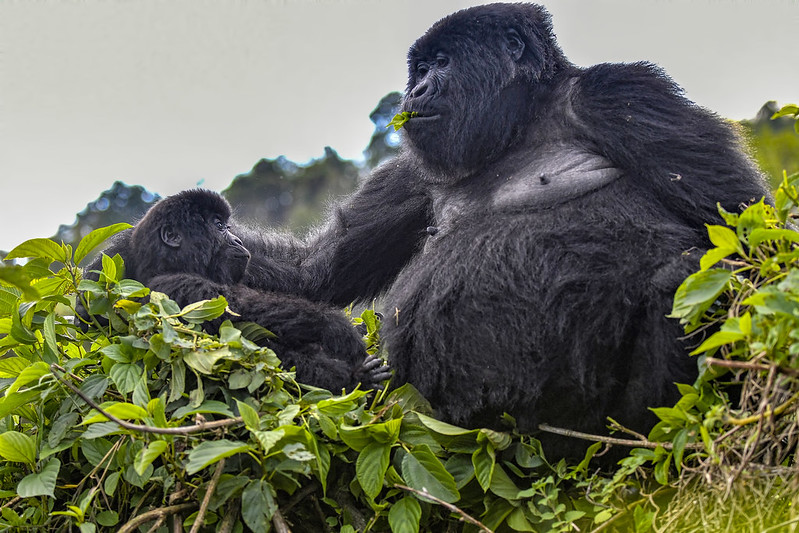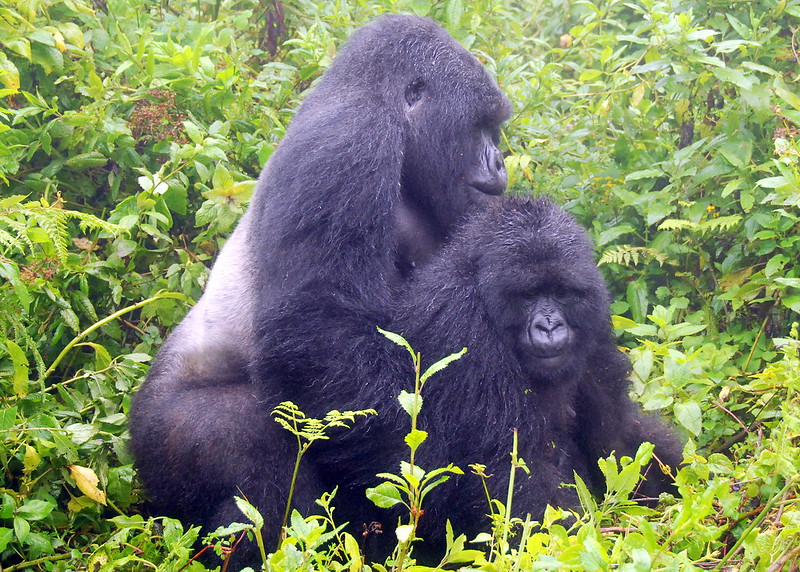
What It Feels Like to Lock Eyes with a Silverback Gorilla
What It Feels Like to Lock Eyes with a Silverback Gorilla
There are wildlife encounters, and then there are moments that etch themselves permanently into your soul. Locking eyes with a silverback gorilla belongs to the latter. This rare experience only possible in Uganda, Rwanda, and the Democratic Republic of Congo feels as though time compresses, the world falls silent, and two vastly different lives merge in a single heartbeat.
For some, it fulfills a lifelong dream. For others, it’s an unexpected emotional jolt that changes how they view nature, conservation, and even themselves.
A silverback, named for the streak of silver hair running down the back of a mature male, embodies power, protection, and quiet authority within the gorilla family. But these are not simply massive primates they are sentient beings, capable of curiosity, emotion, and subtle communication. Standing a few meters away from one, you are not just a tourist in the forest; you are a visitor in his home, subject to his rules, and offered a fleeting glimpse into a world untouched by human civilization.
The First Glimpse
Your trek may take hours, weaving through tangled vines, sliding down muddy slopes, or scrambling over mossy logs. The air feels heavy with humidity and the scent of crushed leaves. You hear them before you see them the rustle of vegetation, the crack of bamboo, a low grunt.
Then the guide halts and signals for silence.
Through a curtain of foliage, you spot him massive yet graceful, his dark fur glowing in shafts of filtered light. His broad chest rises and falls slowly. That silver stripe across his back gleams like a badge of command. Your heart races even as your steps grow deliberate. Instinctively, you know you’ve entered a sacred space.
The Moment of Eye Contact

His head turns. His eyes deep, intelligent, startlingly human meet yours. Your breath catches. This isn’t the vacant stare of a wild animal. It’s recognition. Perhaps not of you personally, but of your presence, your intent, your vulnerability.
Some describe it as humbling, even disarming. Others say it feels like staring into an ancient mirror. His gaze might linger with calm curiosity, or pass briefly and dismissively, as if to say: I’ve seen your kind before, and you are of little consequence.
Either way, the connection slices through species, culture, and language. You become acutely aware of his power power he could unleash in an instant but equally aware of his restraint.
The Physical Presence
Even without touch, you feel him like a physical force. A fully grown silverback may weigh over 180 kilograms (400 pounds) and stand more than 1.7 meters (5.5 feet) tall. Yet, it’s not his size that intimidates it’s his quiet authority.
He doesn’t need to prove his dominance; the forest already bends around him.
You notice the details: the broad nose etched with unique wrinkle patterns, the enormous hands capable of snapping bamboo like twigs, the gentleness with which he turns leaves to feed. You hear the rhythm of his chewing, the low rumbles of communication within his family. These intimate glimpses often feel even more powerful than his sheer bulk.
The Emotional Impact
Many visitors describe waves of emotion that surprise them awe bordering on reverence, or a sudden kinship that feels almost painful. Alongside wonder comes a bittersweet truth: these great beings are endangered, their survival tied directly to human choices about deforestation, poaching, and climate change.
In that moment, you’re not simply seeing a gorilla. You’re witnessing a fragment of Earth’s untamed soul. And for many, that encounter sparks a commitment to protect what remains, so future generations can feel the same gaze.
Where You Can See Silverbacks
These extraordinary encounters are possible only in a few places in Africa:
- Uganda – Home to nearly half the world’s mountain gorillas, Uganda offers treks in Bwindi Impenetrable National Park and Mgahinga Gorilla National Park.
- Rwanda – Volcanoes National Park provides shorter, more accessible treks through bamboo forests and volcanic slopes.
- Democratic Republic of Congo (DRC) – Virunga National Park shelters mountain gorillas, while Kahuzi-Biega National Park protects the eastern lowland gorillas, which also have silverbacks.
- Republic of Congo (Congo-Brazzaville) – Odzala-Kokoua National Park offers treks to see western lowland gorillas in swampy clearings.
Each destination offers its own landscapes and challenges, but the experience remains universally profound.
The Best Time to Trek
- Dry Seasons (June–September & December–February): Easier hikes, less mud, clearer views, and higher demand.
- Wet Seasons (March–May & October–November): Slippery trails but lush forests, fewer crowds, lower costs, and just as many gorilla sightings.
How Long the Encounter Lasts
Most permits allow one unforgettable hour with the gorillas once found. In Uganda, the Gorilla Habituation Experience extends that to four hours, offering a deeper look into their lives. Guides ensure you maintain a safe distance usually 7 to 10 meters though curious gorillas sometimes close the gap themselves.
Practical Considerations
- Fitness: Treks range from easy to strenuous, depending on where the gorillas are that day.
- Altitude: Trails often range from 1,500–2,500 meters (5,000–8,200 feet).
- Gear: Good hiking boots, long sleeves, gloves, and a rain jacket are essential.
- Permits: Always book in advance numbers are limited to protect the gorillas and their habitat.
Why the Memory Stays
Long after you leave the forest, the memory lingers his gaze, the scent of damp earth, the rustle of leaves as he shifted his weight. You don’t just remember seeing a gorilla; you remember being acknowledged by one.
It reshapes your perspective. It reminds you that humans are not apart from nature but woven into its fabric fragile, temporary, and deeply connected.
The Deeper Meaning
Locking eyes with a silverback teaches lessons that outlast the trek itself. It shows that strength can be gentle, that true leadership can be quiet yet unshakable, and that curiosity bridges worlds.
Most of all, it leaves you with an unspoken responsibility to carry the story forward, to share its power, and to safeguard these guardians of the forest for generations to come.


